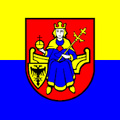Gouden Dai - Hello in Frisian (Saterfrisian)
-
Gouden Dai is a common greeting in Frisian (Saterfrisian). We present to you some interesting information about the language and the people who speak the language.
In case you are one of them who speak Plautdietsch and wish to report inconsistencies, please reply to this topic.
Saterland Frisian, also known as Sater Frisian or Saterlandic (Seeltersk), is the last living dialect of the East Frisian language. It is closely related to the other Frisian languages: North Frisian, spoken in Germany as well, and West Frisian, spoken in the Dutch province of Friesland.
Sater Frisian uses the Latin alphabet like other Frisian languages. It is rarely spoken as its native speakers are very old.

(Image Courtesy:https://www.deutsche-fehnroute.de/)Saterland Frisian is spoken in the three villages of Ramsloh, Scharrel, and Strücklingen in the Community of the Saterland in the northwest corner of the Lower Saxon county of Cloppenburg in northern Germany. The language is taught to a limited extent in some kindergartens and primary schools; articles appear regularly in Cloppenburg newspapers, and there are some theatrical performances in the language.
Saterland Frisian is the only living remnant of Old East Frisian. It is an endangered language, with an estimated number of 2250 speakers, and is spoken in the municipality of the Saterland, which is located in the federal state of Lower Saxony in northwestern Germany.
The Saterland is known as the smallest “language island” in Europe according to the Guinness Book of Records. In 1996 it was reported that Sater Frisian was neither the language used for administration nor in church. Only two hours a week were offered for teaching in primary school. There were no audiovisual teaching materials available. However, this was already an improvement from 1988, when Sater Frisian was not present in schools at all, although people would have supported it.
Dr. Marron Fort is one of the researchers who is helping to maintain Sater Frisian significantly. He came to Germany in 1965 and fell in love with the language. He decided to stay in Germany and has since helped considerably in reviving Sater Frisian. Moreover, he has translated the New Testament into Sater Frisian and created the Sater Frisian Dictionary. This laid the foundation for more Sater Frisian literature. The work of Fort is also used as a reference for school materials.
Sater Frisian is covered by the European Charter for Regional or Minority Languages under Part II and Part III since 1999. It encourages the use of Sater Frisian in pre-school, primary school, secondary and higher education.
Hope you like it, if you know any other fascinating facts about Saterland Frisian, let us all know!
Source: https://dbpedia.org/
https://en.wikipedia.org/
https://www.proquest.com/
https://wiki.mercator-research.eu/ -
Gouden Dai is a common greeting in Frisian (Saterfrisian). We present to you some interesting information about the language and the people who speak the language.
In case you are one of them who speak Plautdietsch and wish to report inconsistencies, please reply to this topic.
Saterland Frisian, also known as Sater Frisian or Saterlandic (Seeltersk), is the last living dialect of the East Frisian language. It is closely related to the other Frisian languages: North Frisian, spoken in Germany as well, and West Frisian, spoken in the Dutch province of Friesland.
Sater Frisian uses the Latin alphabet like other Frisian languages. It is rarely spoken as its native speakers are very old.

(Image Courtesy:https://www.deutsche-fehnroute.de/)Saterland Frisian is spoken in the three villages of Ramsloh, Scharrel, and Strücklingen in the Community of the Saterland in the northwest corner of the Lower Saxon county of Cloppenburg in northern Germany. The language is taught to a limited extent in some kindergartens and primary schools; articles appear regularly in Cloppenburg newspapers, and there are some theatrical performances in the language.
Saterland Frisian is the only living remnant of Old East Frisian. It is an endangered language, with an estimated number of 2250 speakers, and is spoken in the municipality of the Saterland, which is located in the federal state of Lower Saxony in northwestern Germany.
The Saterland is known as the smallest “language island” in Europe according to the Guinness Book of Records. In 1996 it was reported that Sater Frisian was neither the language used for administration nor in church. Only two hours a week were offered for teaching in primary school. There were no audiovisual teaching materials available. However, this was already an improvement from 1988, when Sater Frisian was not present in schools at all, although people would have supported it.
Dr. Marron Fort is one of the researchers who is helping to maintain Sater Frisian significantly. He came to Germany in 1965 and fell in love with the language. He decided to stay in Germany and has since helped considerably in reviving Sater Frisian. Moreover, he has translated the New Testament into Sater Frisian and created the Sater Frisian Dictionary. This laid the foundation for more Sater Frisian literature. The work of Fort is also used as a reference for school materials.
Sater Frisian is covered by the European Charter for Regional or Minority Languages under Part II and Part III since 1999. It encourages the use of Sater Frisian in pre-school, primary school, secondary and higher education.
Hope you like it, if you know any other fascinating facts about Saterland Frisian, let us all know!
Source: https://dbpedia.org/
https://en.wikipedia.org/
https://www.proquest.com/
https://wiki.mercator-research.eu/@agentcarter absolutely loving the different languages of Hello including the information about the original place...keep sharing!!

